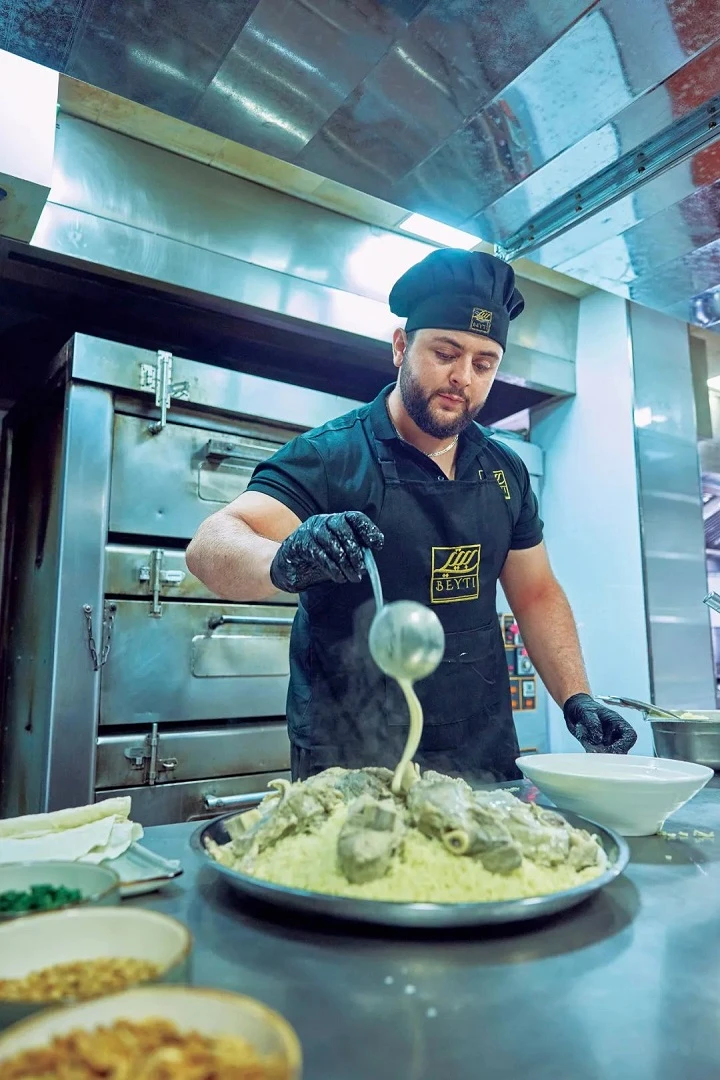While big cities like Beijing and Shanghai are often celebrated for their diverse culinary scenes, some of China's most authentic international flavors are surprisingly found in its small towns. Unlike the bustling metropolises where global cuisines are commonplace, these smaller cities offer a unique blend of authenticity and cultural richness that reflects the history and multicultural influences of their residents. The fusion of local and international elements in these towns tells a story not just of food but of global connections and the movement of people across borders.
Three such towns—Yiwu in Zhejiang, Qingtian in Zhejiang, and Xinglong in Hainan—stand out as unexpected hubs of international cuisine. Each of these towns has its own unique history and connection to the wider world, making them hidden gems for those seeking an authentic taste of foreign cultures without leaving China.

Yiwu: A Melting Pot of Middle Eastern Delights
Yiwu, a small city in Zhejiang Province, has become an unlikely center for Middle Eastern cuisine, thanks to its thriving international trade market. At first glance, it might be hard to believe that this small town could host such a vibrant mix of global flavors, but a walk down the city's streets reveals a different story.
The crossroads of Binwang Road and Chouzhou North Road, for example, are lined with cafes and restaurants serving everything from Turkish kebabs to Lebanese tabbouleh. The air is thick with the scent of spices and fruit-flavored tobacco from the many hookah lounges, and the sight of foreign faces is commonplace. This area, known as the 158 Creative Park, is a gathering spot for the city's large community of international traders, many of whom have brought their culinary traditions with them.
One of the most popular spots is Beyti Restaurant, an Arab eatery that has become a local favorite. Originally opened by a Jordanian entrepreneur who saw a need for halal dining options, Beyti has grown in popularity among both foreign and Chinese patrons. The restaurant's transformation is a testament to the changing dynamics of Yiwu's food scene. Once catering mainly to international traders, it now attracts a significant number of Chinese diners, drawn by the exotic flavors and the novelty of trying something different. The restaurant's signature dish, Mansaf, a traditional Jordanian lamb and rice dish, is a must-try for anyone visiting Yiwu.
Yiwu's Middle Eastern restaurants are not just places to eat; they are social hubs where people from different backgrounds come together. Whether it's the simple joy of sharing a meal or the more profound experience of cultural exchange, these restaurants offer a glimpse into the lives of the international community in Yiwu.
Qingtian: The Heart of European Cuisine in China
Moving on to Qingtian, another small town in Zhejiang Province, we find a different kind of international influence. Known for its large overseas Chinese population, particularly in Europe, Qingtian has developed a deep connection with European cuisine. This connection is so strong that it has become a defining feature of the town's culinary landscape.
The presence of European-style cafes and restaurants in Qingtian is not just a trend; it's a way of life. Many of the town's residents have lived abroad, particularly in countries like Italy and Spain, and have brought back with them a love for Western food and dining culture. It's common to see locals enjoying espresso or dining on steak and ham, influenced by their relatives who have settled in Europe.
One standout establishment is Caca Italian Restaurant, run by a family who spent years living in Italy. The owner, Yulu Ye, learned the art of Italian cooking from elderly Italians in her small town. Her restaurant is a cozy place where locals and tourists alike can enjoy authentic Italian dishes like lasagna and tiramisu. The attention to detail in the food preparation and the warm, welcoming atmosphere make it a favorite among the town's residents.
Another notable mention is Cassia, a Spanish restaurant that brings the rustic flavors of Spain's northern coast to Qingtian. The owner, Chen Yifeng, returned to China after running a restaurant in Spain and decided to recreate the simple, hearty dishes of his homeland. The tapas and paella served here are reminiscent of the daily fare in Spanish villages, and the restaurant's unpretentious style has won over many loyal customers, including the town's older Chinese residents who have a nostalgic connection to the food.
Qingtian's embrace of European cuisine is more than just a trend; it's a reflection of the town's deep ties to Europe. For the people of Qingtian, eating Western food is not just about trying something new; it's a way to connect with family and friends abroad and to bring a piece of their overseas lives back home.
Xinglong: Southeast Asian Flavors in Hainan
Lastly, we journey to Xinglong, a small town in Hainan Province that has become known for its Southeast Asian cuisine. This might seem surprising at first, but Xinglong's history as a settlement for returned overseas Chinese from Southeast Asia has shaped its culinary landscape.
The town is dotted with restaurants serving dishes like Vietnamese pho and Malaysian laksa, reflecting the heritage of its residents. These dishes are not just popular among the locals but have also attracted tourists looking to experience authentic Southeast Asian flavors without leaving China.
One of the most popular eateries in Xinglong is a small, family-run Vietnamese restaurant that has been serving pho for decades. The recipe has been passed down through generations, with the broth simmered for hours to achieve the perfect balance of flavors. This attention to detail and commitment to authenticity is what makes the food in Xinglong so special. Xinglong's unique culinary scene is a testament to the enduring influence of its Southeast Asian community. The food here is more than just a meal; it's a way of preserving a cultural identity and sharing it with others.



